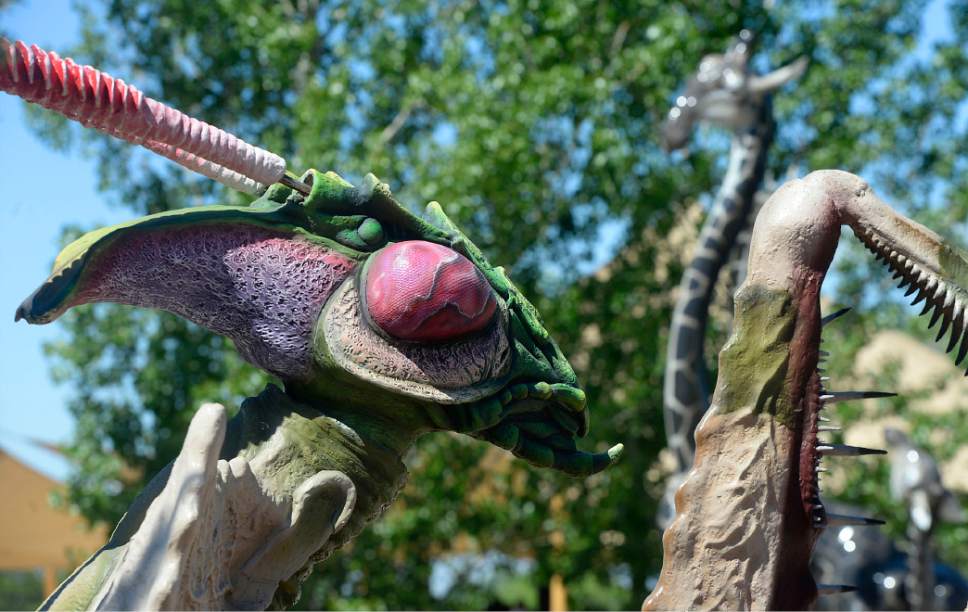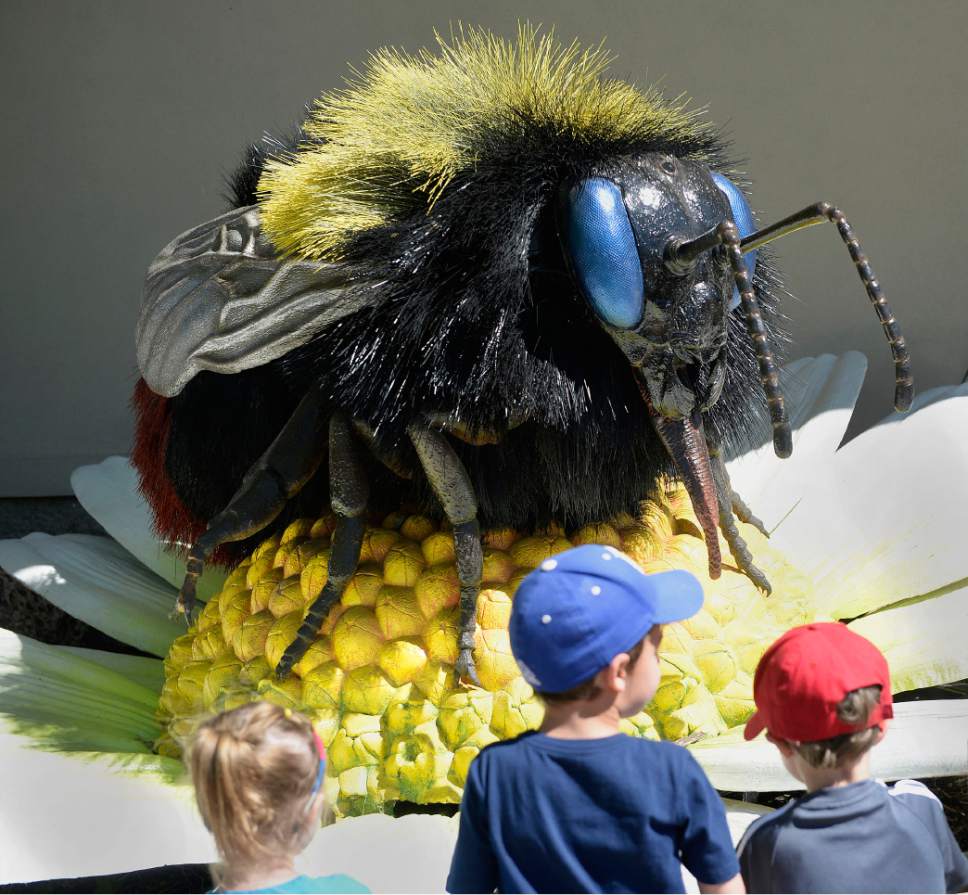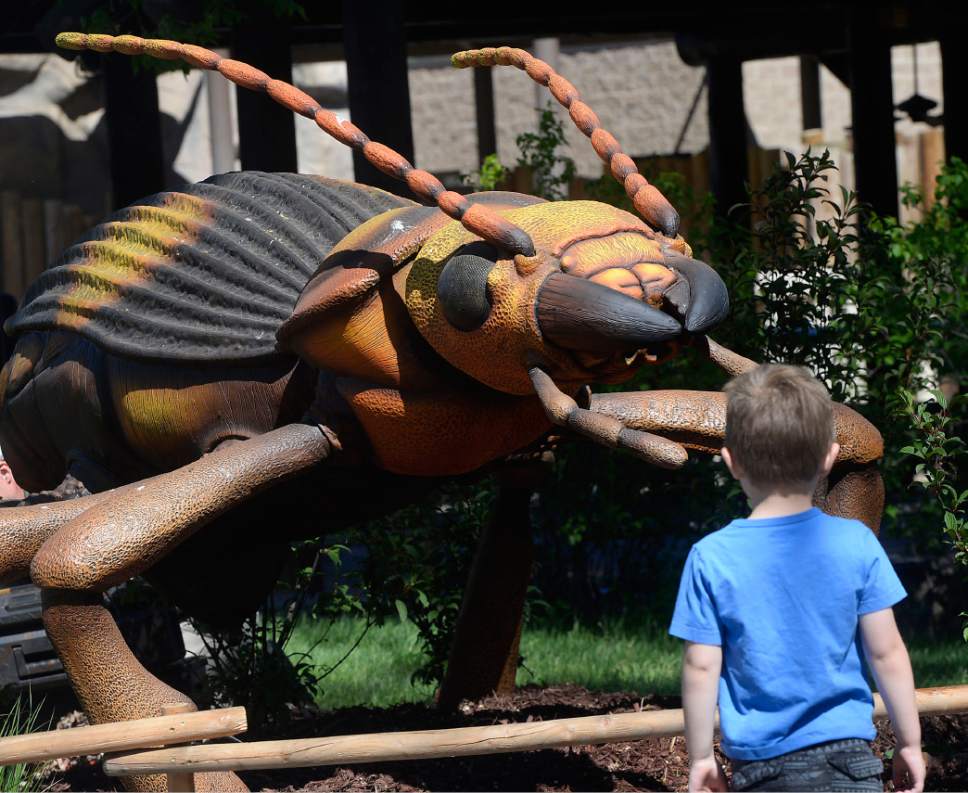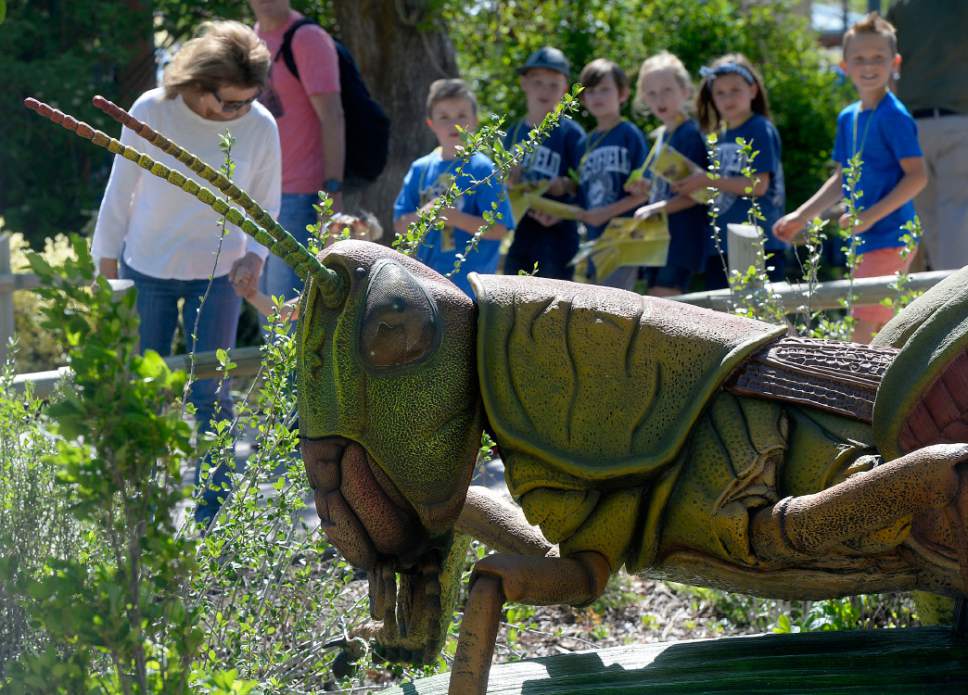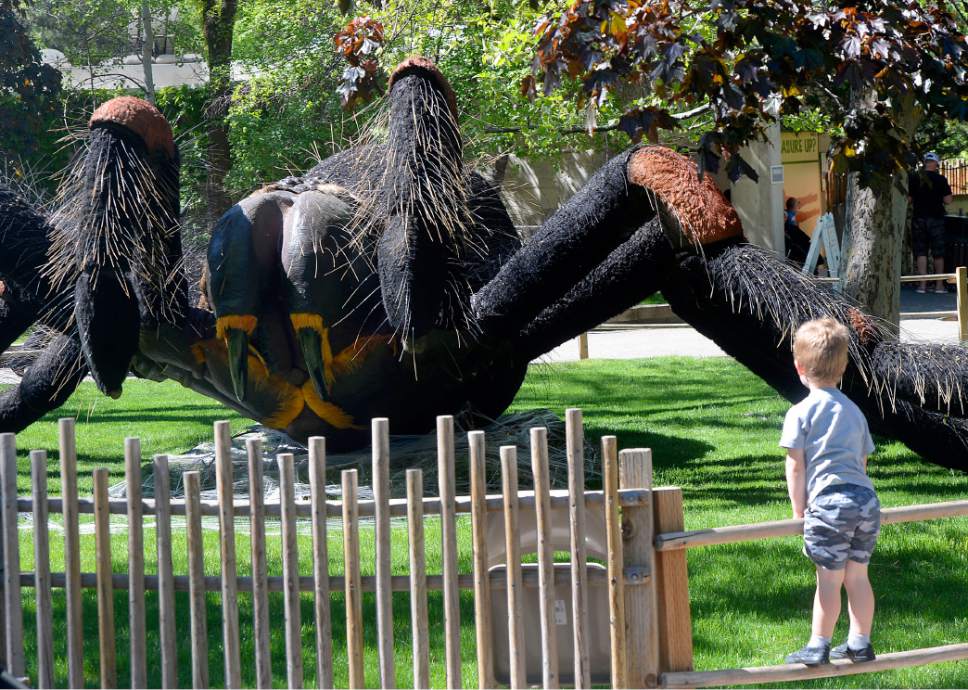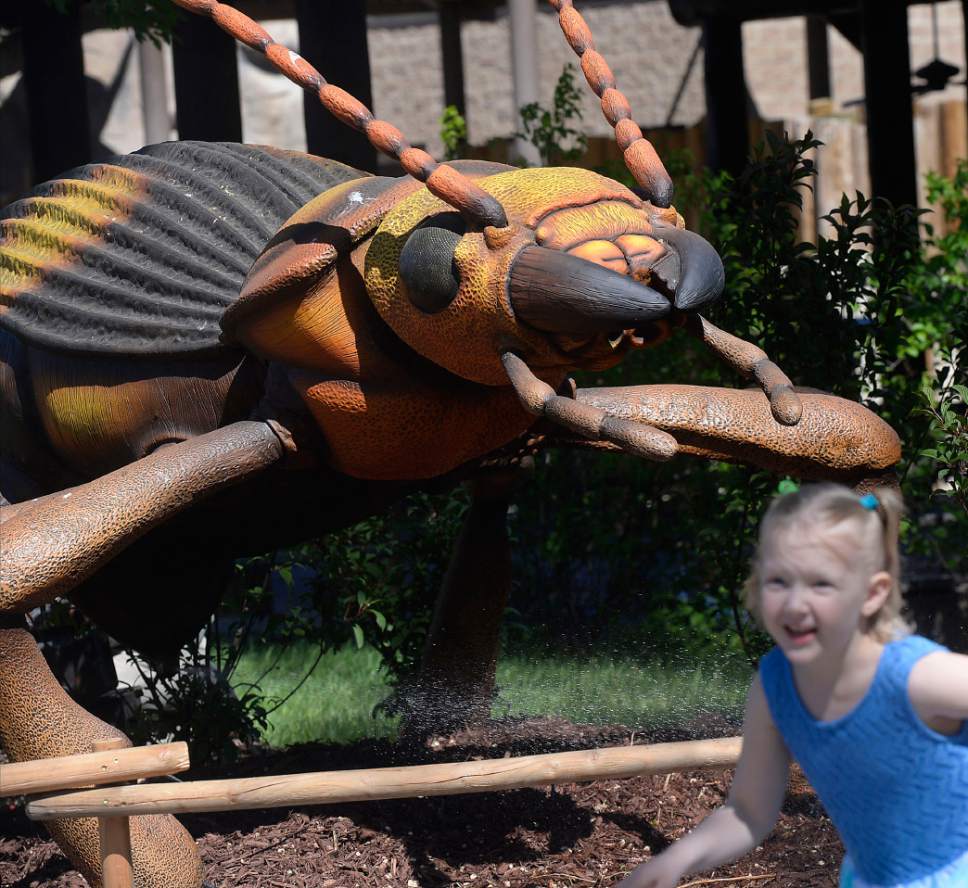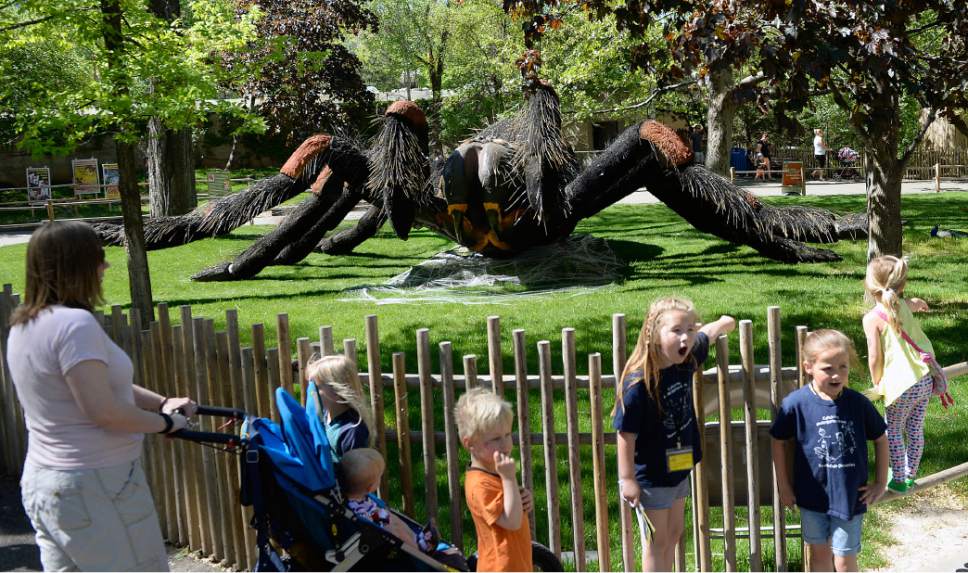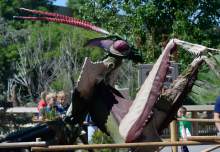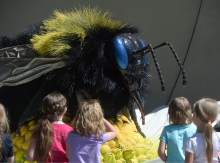This is an archived article that was published on sltrib.com in 2017, and information in the article may be outdated. It is provided only for personal research purposes and may not be reprinted.
Utah's Hogle Zoo brought in some oversize imitation insects this summer to impress upon visitors the importance of real bugs.
Fourteen anatomically correct, robotic replicas of bugs — from bees and moths to tarantulas and scorpions — are scattered around the zoo as part of this year's summer educational enhancement to Hogle's usual animal offerings.
It's dubbed "Bugzilla."
"There's a great message behind our bugs," said Brad Parkin, Hogle Zoo's marketing director, when the bugs were unveiled Friday for a run scheduled to last through Sept. 11.
"They're misunderstood. They're taken for granted," he added, citing bugs' roles in pollinating plants, conditioning soils and eating refuse. "The kids especially like them. And we're all about kids, always have been, always will be."
The bugs were created by Billings Productions of Allen, Texas, the same company that produced animatronic dinosaurs for Hogle's Zoorassic Park exhibit in 2015.
They are made of steel and fiberglass, with skin material from a urethane compound. "Like our dinosaurs," the company's website said, "the realistic movements of our bugs are powered by a pneumatic system that enables smoother and finer movements."
The movement of a devil's flower mantis was good enough that 5-year-old Hailee McKnight of Saratoga Springs said "Hello" to the bug, while her older brother Braden told his dad, Kyle, how fast this bug is and how it lives in the forest.
Over at the emperor scorpion, with its snapping claws and forward-hooking tail, 5½-year-old (emphasis on the half) Anaya Alt took a cellphone picture of her nanny Alyece Billings while her little brother Theo sat in a stroller.
Anaya said she doesn't like bugs, shyly whispering in her nanny's ear to tell the reporter she thought the scorpion was "pretty creepy. If it was real, we would run."
Parkin expects the scorpion — "the T. rex of the show because it's the biggest" — to be particularly popular this summer, along with the Australian bombardier beetle, which sprays water.
The interactive Say's firefly also is likely to attract crowds, he figures, because kids can turn a wheel that makes its belly light up.
To make insects more embraceable, the zoo has set up a lady bug exhibit that kids can play on. "They're more than welcome to climb on them, and they provide great photo opportunities for families," Parkin said.
The big bugs on display will be accompanied by real bugs in daily programs at the zoo's Discovery Theater and exhibits of several invertebrates in the Small Animal Building, also home to the Insects of the World display.
By fall, Parkin hopes Utahns have a better appreciation for "insects, arachnids and all forms of invertebrates. They're not as scary as you think."
The exhibit is sponsored by Les Schwab Tires, with financial support from Coca-Cola and the Salt Lake County Zoo, Arts and Parks program.


